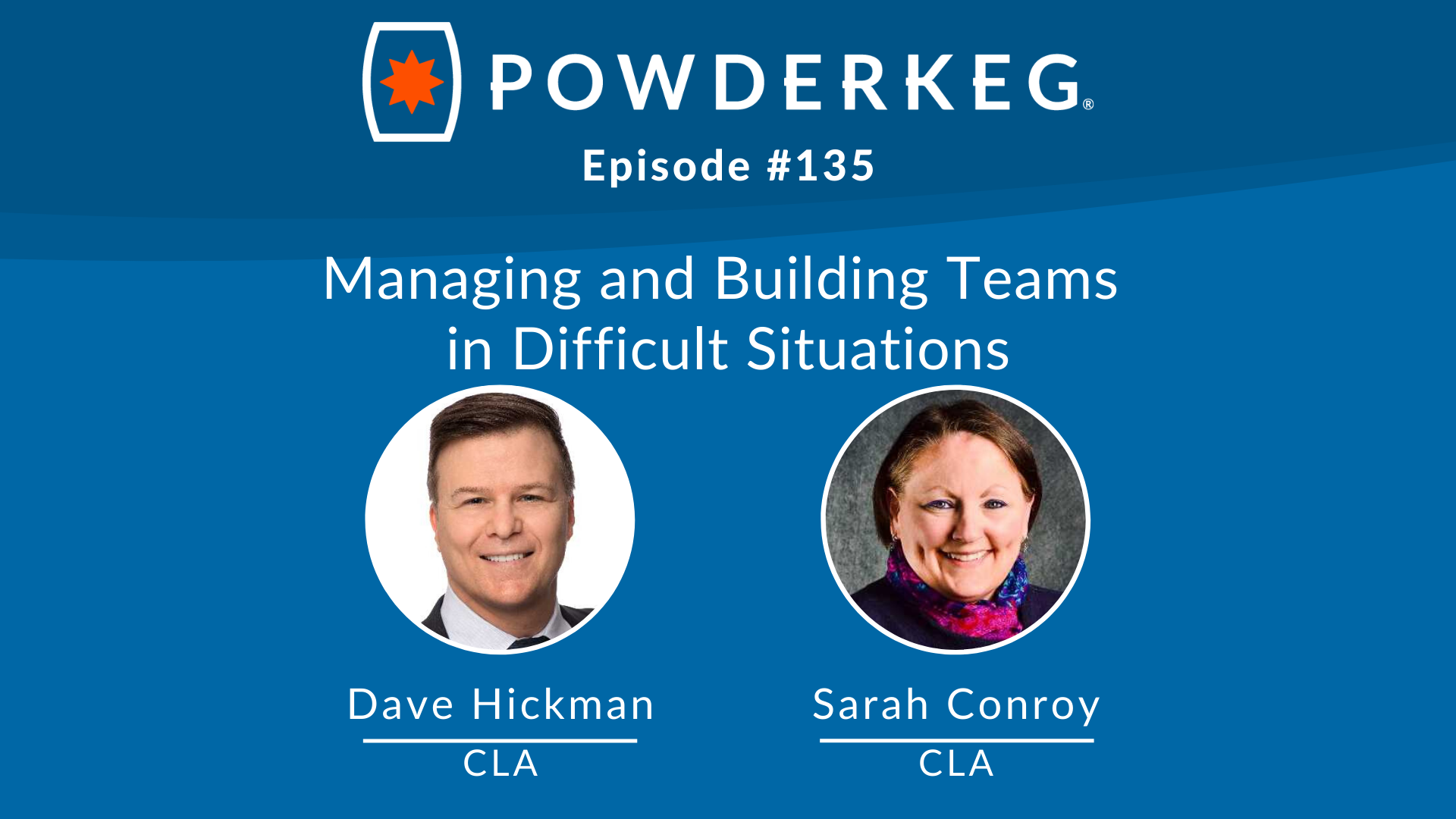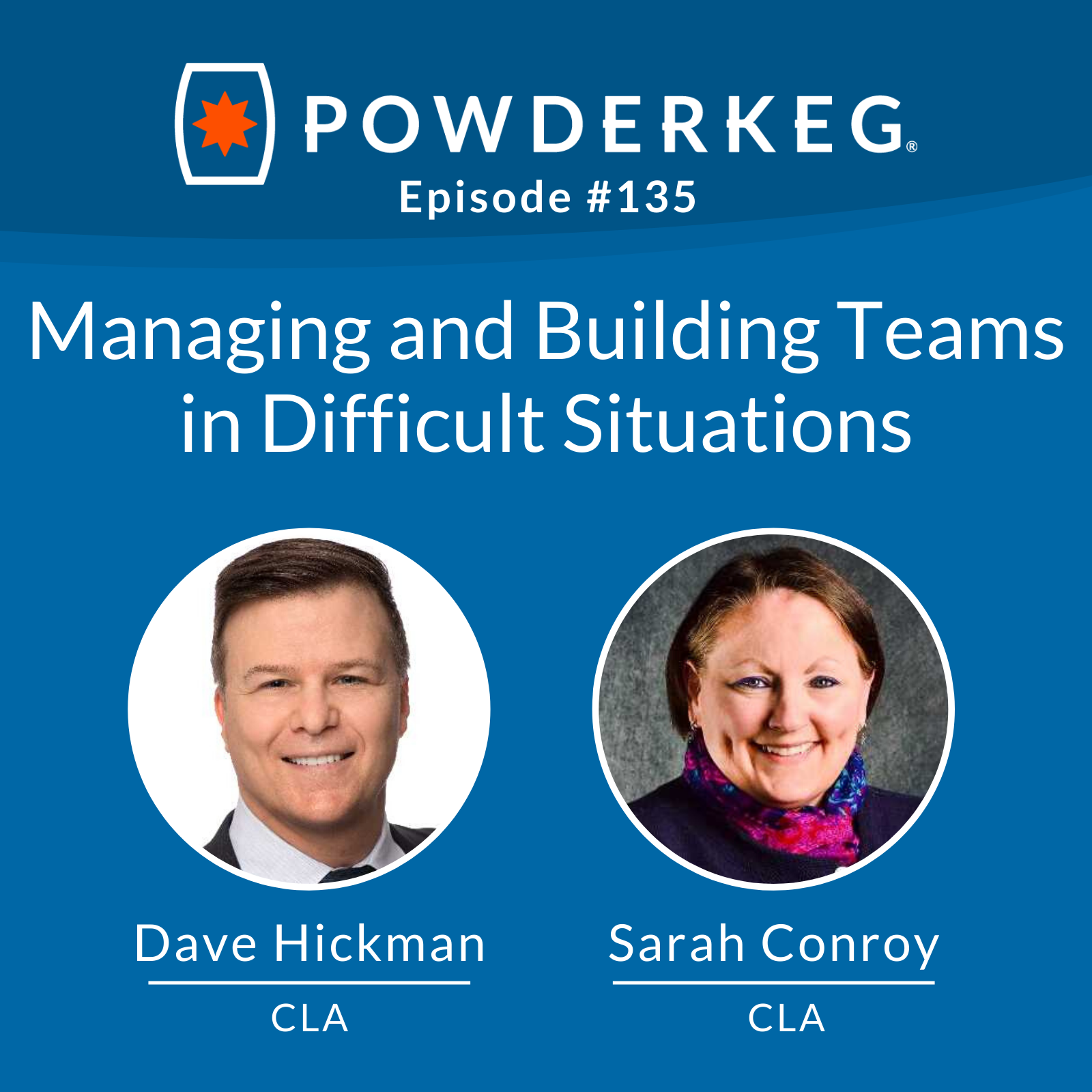Developing a growth mindset on your team isn’t just about adding new skills; it’s about changing how your team sees challenges, setbacks, and success.
A team with a growth mindset believes they can improve with effort, adapt to new challenges, and constantly learn. This mindset helps your team face obstacles with confidence and keeps them motivated, especially when things get tough.
In a world that rewards innovation and adaptability, having a growth mindset at work is crucial. People with a growth mindset embrace new ideas, are open to feedback, and view setbacks as stepping stones, not failures. For leaders, building a growth mindset culture isn’t just about personal growth; it’s also about inspiring your team to keep improving. So, let’s dive into what it means to develop a growth mindset and why it’s one of the most powerful tools you can have in your toolkit.
22 Ways to Develop a Growth Mindset Culture at Work
1. Turn Big Challenges into Bigger Opportunities
 At LYFE Foods, we foster a growth mindset by instilling the belief that there is always potential for exponential growth—what we call “10x-ing” our results. We encourage our team to see that, no matter the challenges we face, there is a version of reality where achieving tenfold growth is not just possible but attainable. It’s about cultivating a mindset that views every obstacle as an opportunity to find creative solutions and push beyond perceived limitations.
At LYFE Foods, we foster a growth mindset by instilling the belief that there is always potential for exponential growth—what we call “10x-ing” our results. We encourage our team to see that, no matter the challenges we face, there is a version of reality where achieving tenfold growth is not just possible but attainable. It’s about cultivating a mindset that views every obstacle as an opportunity to find creative solutions and push beyond perceived limitations.
This approach has been particularly valuable when facing challenges that initially seem insurmountable. By reframing these situations as opportunities in disguise, we’ve been able to consistently overcome them in ways that are unique for an organization of our size and agility.
Omar Atia, Co-Founder and CEO, ZeroCarb LYFE
2. Celebrate Failures As Growth Opportunities for Your Team
 Our team participates in “failure showcases,” where employees share their biggest mistakes from the past quarter and, more importantly, what they learned from them. It sounds counterintuitive, but this turns failure into a badge of honor because every misstep becomes a growth opportunity. When we openly celebrate these moments, it removes the fear of trying new things. The outcome is a team that embraces risk with confidence, knowing the process is as important as the result.
Our team participates in “failure showcases,” where employees share their biggest mistakes from the past quarter and, more importantly, what they learned from them. It sounds counterintuitive, but this turns failure into a badge of honor because every misstep becomes a growth opportunity. When we openly celebrate these moments, it removes the fear of trying new things. The outcome is a team that embraces risk with confidence, knowing the process is as important as the result.
Jason Hennessey, CEO, Hennessey Digital
3. Embrace Mistakes to Expand Skills and Build Confidence
 Allowing mistakes – even celebrating them and sharing the learning with the whole team. Giving grace for mistakes allows team members to stretch their skillset and gain confidence.
Allowing mistakes – even celebrating them and sharing the learning with the whole team. Giving grace for mistakes allows team members to stretch their skillset and gain confidence.
Amy Oviedo, CEO & Founder, Recruiting Experiences
4. Foster Curiosity and Autonomy to Boost Growth Mindset
 I encourage a growth mindset by fostering curiosity and autonomy within the team. For day-to-day tasks, instead of giving direct answers, I ask questions and seek their insights, feedback, and opinions. This not only challenges them to think critically but also gives them ownership over their work. I also create opportunities for them to share those insights with others, allowing them to feel proud of their contributions and build confidence.
I encourage a growth mindset by fostering curiosity and autonomy within the team. For day-to-day tasks, instead of giving direct answers, I ask questions and seek their insights, feedback, and opinions. This not only challenges them to think critically but also gives them ownership over their work. I also create opportunities for them to share those insights with others, allowing them to feel proud of their contributions and build confidence.
Regular check-ins are another key component. I ask team members what they’re curious about or eager to learn, and I look for ways to incorporate those interests into our current projects. Additionally, I actively send them resources—whether it’s articles, podcasts, or videos—that align with their learning goals and offer to pay for courses and certifications to help them stay relevant and continue growing. As a small, agile team with ambitious goals but limited budgets, ensuring each team member feels valued has been key to fostering a growth mindset naturally.
Vivian Chen, Founder & CEO, Rise
5. Empower Ownership for Greater Team Impact and Success
 In our small team, we try to have individuals take ownership of projects and outcomes. It has worked well for our small team.
In our small team, we try to have individuals take ownership of projects and outcomes. It has worked well for our small team.
Clay Gordon, Partner, Stout Street Capital
6. Pay For Job-Related Learning to Invest in Growth Mindset
 We take several approaches towards encouraging a growth mindset at our fast-growing startup.
We take several approaches towards encouraging a growth mindset at our fast-growing startup.
First of all, we have a policy of paying for any learning related to the job or the industry. This might mean paying for conferences, classes, or even just books. We heavily encourage employees to take advantage of this program.
For our OKR/KPI system, we only set concrete numbers when it makes sense. For many of our goals, we focus more on effort and the steps that need to be taken to reach the desired result. This way, employees are not penalized when numbers are missed if it was not within their control.
We also try to frequently give positive feedback for good job performance, as well as kindly-worded steps for improvement in cases where people are lagging behind.
We encourage people to make calculated bets and embrace risk, whether this is running controversial ads or trying innovative A/B tests. But to best benefit from this, we ensure that we have great analytics and everything is data-driven. For example, I would rather run 10 controversial ads and get rid of the eight worst-converting ones than run one ad we “think” will perform best with no data.
Finally, we do a weekly thread in our all-company Slack channel highlighting specific people and their best accomplishments for the week. The thread is always very popular.
Ben Miller, COO, Undetectable AI
7. Drive Growth Mindset by Prioritizing Patient Impact
 Our growth mindset is keeping healthcare personal. Somewhere in a hospital right now a patient needs our device and doesn’t currently have it. One day it will be one of our team member’s family that needs it.
Our growth mindset is keeping healthcare personal. Somewhere in a hospital right now a patient needs our device and doesn’t currently have it. One day it will be one of our team member’s family that needs it.
A growth mindset for our company is fulfilling the demand of patients in need of our device. We hung a digital scoreboard in our front entry of the building that shares our patient impact numbers to anyone who walks in that door. Today we are at 10,422 patients and counting. If we take care of the patient, the revenue and growth will quickly follow.
Jason M. Bobay, President, RF Health
8. Create A Supportive Environment
 Fostering a growth mindset within my team is a priority, and it starts with creating a supportive environment. I encourage open communication, where everyone feels comfortable sharing their ideas, challenges, and lessons learned. Regular team meetings allow us to discuss successes and setbacks, highlighting that mistakes are opportunities for growth rather than failures.
Fostering a growth mindset within my team is a priority, and it starts with creating a supportive environment. I encourage open communication, where everyone feels comfortable sharing their ideas, challenges, and lessons learned. Regular team meetings allow us to discuss successes and setbacks, highlighting that mistakes are opportunities for growth rather than failures.
I also emphasize the importance of continuous learning. I promote professional development by providing access to online courses, workshops, or even informal lunch-and-learns where we can explore new skills together. This helps team members grow individually and strengthens our collaboration as we learn from one another.
I also keep the team motivated by celebrating achievements, big or small. Acknowledging hard work boosts morale and reinforces the idea that effort leads to progress.
Danielle Hu, Founder, The Wanderlover
9. Prioritize MVP for Faster Results and Long-Term Impact
 One of our core values is speed to value, which focuses on driving to an MVP using agile methodologies. We focus on the MVP over perfection and ways to implement change in the short term while working towards a more significant strategic impact in the long term.
One of our core values is speed to value, which focuses on driving to an MVP using agile methodologies. We focus on the MVP over perfection and ways to implement change in the short term while working towards a more significant strategic impact in the long term.
Rachel Johnson, Fractional Marketing Executive and Growth Scaler
10. Normalize Failure Through Lessons-Learned Sessions
 We celebrate failures as learning opportunities. After each initiative or cycle, we hold a “lessons-learned” session, where team members share mistakes made and insights gained. This process normalizes failure as part of growth and innovation.
We celebrate failures as learning opportunities. After each initiative or cycle, we hold a “lessons-learned” session, where team members share mistakes made and insights gained. This process normalizes failure as part of growth and innovation.
For example, when we miss deadlines or encounter unforeseen issues due to risk-taking, the team addresses these challenges openly. Instead of assigning blame, we focus on brainstorming ways to avoid similar setbacks in the future. We also maintain a “failure channel” in our Slack, where team members post their challenges and what they learned. This visual reminder reinforces that mistakes are stepping stones to improvement.
This approach has increased risk-taking and creativity within the team, empowering members to push boundaries knowing that even when things go wrong, the learning experience is valuable.
Sam Bahreini, Founder & CEO, Konstellate
11. Foster Curiosity to Enhance Team Problem Solving
 Make curiosity part of our everyday conversations. Ask questions that spark deeper thinking and often respond to others with more questions to get them to reflect and explore new ideas. It’s less about giving the answer and more about helping them find it on their own.
Make curiosity part of our everyday conversations. Ask questions that spark deeper thinking and often respond to others with more questions to get them to reflect and explore new ideas. It’s less about giving the answer and more about helping them find it on their own.
Make sure everyone’s voice is heard when we’re making decisions by explaining the “why” behind things and encouraging input. After decisions are made, share the results and what we learned to show how their contributions made a difference and keep the learning going.
Andrew Nguyen, Founding Member, Sidebar
12. Create A Psychologically Safe Environment
 We create a psychologically safe work environment. From onboarding, we clarify that our team culture is built on respect and support. We have zero-tolerance for criticism that discourages sharing ideas and any form of retaliation. It gives the team confidence that any feedback comes from an attempt to improve them and that their contributions are valued.
We create a psychologically safe work environment. From onboarding, we clarify that our team culture is built on respect and support. We have zero-tolerance for criticism that discourages sharing ideas and any form of retaliation. It gives the team confidence that any feedback comes from an attempt to improve them and that their contributions are valued.
The human brain is wired to keep us safe, and we can subconsciously resist feedback if we feel attacked. Feedback creates anxiety that prevents employees from positively receiving feedback and using it for growth. We liaise with our leaders to be calm and mindful of tension when giving feedback.
Additionally, we encourage employees to ask questions and take time to process and respond to the feedback. It is impossible to grow without feedback, and a psychologically-safe environment encourages them to use feedback to grow.
Oliver Page, Co-Founder & CEO, CyberNut
13. Use Retrospectives to Learn from the Past, Plan Ahead
 Retrospective is a big part of we encourage growth. In order to look forward and see a clear picture of the future you have to know where you’ve come from. At times, the lessons from the failures are significantly more valuable than the successes. Why didn’t something work? Is there more to the story that you can uncover? It’s not like we spend time consistently looking in the rearview mirror but it’s helpful to know it’s there. This can be true in strategic high-level conversations as well as day-to-day ones.
Retrospective is a big part of we encourage growth. In order to look forward and see a clear picture of the future you have to know where you’ve come from. At times, the lessons from the failures are significantly more valuable than the successes. Why didn’t something work? Is there more to the story that you can uncover? It’s not like we spend time consistently looking in the rearview mirror but it’s helpful to know it’s there. This can be true in strategic high-level conversations as well as day-to-day ones.
Casey Bolsega, Sr. Portfolio Manager, Intrepid
14. Invest In Continuous Learning for a “Growth-Midset” Culture
 The recycling industry is growing faster than most people realize. Laws are changing, new technologies are emerging, and environmental pollution continues to increase. To stay ahead of the curve, we invest in continuous learning. Whether it’s a new certification, a training program, or learning about new e-waste management techniques, I know our teams have what it takes to grow.
The recycling industry is growing faster than most people realize. Laws are changing, new technologies are emerging, and environmental pollution continues to increase. To stay ahead of the curve, we invest in continuous learning. Whether it’s a new certification, a training program, or learning about new e-waste management techniques, I know our teams have what it takes to grow.
I also encourage cross-training. If you enjoy recycling garden metals, why not spend some time learning about recycling? Not only will it expand the team’s skills, but it will also give us a better understanding of how our company works as a whole. Ultimately, this makes it easier for us.
We value hard work and results. I’ve learned that getting people to step out of their comfort zone or try new things can be more rewarding than success alone. The costs are high, but the journey—the late nights, the tests, the hard work—is the most important. By paying for the process, it ensures that growth will occur over time.
When we first started recycling e-waste, there were some misconceptions. The team liked tools and metals, but e-waste is a whole new ballgame. I encouraged everyone to see that there was room to grow. We learned, we adjusted, and today our e-waste department is alive and well. It’s not good to change, but it’s where most of the growth happens.
Finally, it’s important to create a work environment where people feel safe to take risks. At Whits, we are all about open communication. If someone has an idea, he knows he won’t give it up, even if it doesn’t work. This type of support encourages people to try new things and ultimately helps the team grow.
Ultimately, the growth mindset is to create a team that is not afraid to learn, develop and take on new challenges. This is how we have progressed, and this is how we will continue to progress.
Mark Whitley, CEO, Whits Corporation
15. Make Decisions with Long-Term Growth in Mind
 Every decision I make is focused on growing or supporting the growth of the company. Sometimes my team is confused as to why I make a decision (just get the task done with the least cost, for example), but I try to explain my reasoning so they understand we are building something for tomorrow, not just today.
Every decision I make is focused on growing or supporting the growth of the company. Sometimes my team is confused as to why I make a decision (just get the task done with the least cost, for example), but I try to explain my reasoning so they understand we are building something for tomorrow, not just today.
Chris Pratt, CEO, OCD Clean & Sanitize
16. Foster Collaboration And Innovation
 To encourage a growth mindset within my team, I prioritize creating a culture that embraces collaboration and innovation. By fostering a proactive environment where creative professionals can brainstorm and peer-review campaigns, I’ve seen remarkable improvements in marketing results. This collaborative approach engages team members in cooperative problem-solving, effectively nurturing individual growth and enhancing our collective achievements.
To encourage a growth mindset within my team, I prioritize creating a culture that embraces collaboration and innovation. By fostering a proactive environment where creative professionals can brainstorm and peer-review campaigns, I’ve seen remarkable improvements in marketing results. This collaborative approach engages team members in cooperative problem-solving, effectively nurturing individual growth and enhancing our collective achievements.
A specific example is implementing AI-powered tools in our digital asset management processes, which streamlines content operations and encourages team members to explore new tech avenues. By removing organizational drag and automating repetitive tasks, we inspire our team to focus on creativity and advanced problem-solving. This not only accelerates growth but also improves asset findability and brand governance.
Moreover, I’m a big advocate of “Lifeflow”—integrating work and personal life seamlessly with clear expectations and supportive technology. By trusting and empowering our teams, we create an environment where they can thrive both personally and professionally. This holistic approach ensures we not only meet our objectives but exceed them through continuous learning and adaptation.
Julie Ginn, Vice President Global Revenue Marketing, Aprimo
17. Leaders Model Behavior and Encourage Risk-Taking
 Leaders set examples of how a company should behave. What teammates see in their leaders, is what they likely think is expected and/or acceptable. First principle is to show the acceptance of mistakes. Without it, the risk-taking (new ideas, new approaches) is minimal. No one wants to be wrong, but if being wrong is part of efforts to become better, everyone embraces it.
Leaders set examples of how a company should behave. What teammates see in their leaders, is what they likely think is expected and/or acceptable. First principle is to show the acceptance of mistakes. Without it, the risk-taking (new ideas, new approaches) is minimal. No one wants to be wrong, but if being wrong is part of efforts to become better, everyone embraces it.
Justin Fite, Co-Founder, Empiric
18. Growth Mindset: Embrace Failure As A Step Forward
 Encouraging a growth mindset on my team starts with embracing a culture where failure is seen as a step toward excellence. We prioritize clarity over cleverness, which means cutting through the marketing noise to produce messaging that genuinely connects with users. This approach aligns with empowering team members to understand the real impact of their work and learn from every project, regardless of its immediate success.
Encouraging a growth mindset on my team starts with embracing a culture where failure is seen as a step toward excellence. We prioritize clarity over cleverness, which means cutting through the marketing noise to produce messaging that genuinely connects with users. This approach aligns with empowering team members to understand the real impact of their work and learn from every project, regardless of its immediate success.
A turning point for us was when I realized my “marketing sucks” philosophy was being ignored, leading to generic output. Instead of directing, I encouraged team autonomy and accountability by simplifying our approach and focusing on results-driven messaging. For example, we restructured a client’s branding strategy by removing jargon-filled headlines and making the messaging clear and impactful, resulting in a 40% increase in client engagement.
Finally, I altered our culture to accept and learn from critiques. After launching a redesigned website for a client, we analyzed user interactions to identify bottlenecks. We openly discussed the findings with the team, leading to actionable improvements and a 22% increase in conversions. By fostering such a proactive environment, my team feels safe to push boundaries, learn from outcomes, and regularly challenge the status quo.
Josh Cremer, Founder & CEO, The Rohg Agency
19. Lead by Being Curious, Vulnerable, and Embracing Failure
 As a leader, you can model this behavior by being curious and vulnerable publicly.
As a leader, you can model this behavior by being curious and vulnerable publicly.
Ask the dumb question, admit when you make a mistake, admit what you don’t know yet.
You can also create an environment where failure is allowed and routine. I’ve done this in engineering contexts by having new software engineers – no matter how junior – ship code to production in their first week of employment.
I’ve told them up front that it’s better for everyone if what they deploy isn’t quite right, and maybe a little broken. Because then we can let them know that everybody makes mistakes, and what matters isn’t that you are perfect, but that you can recover from those mistakes quickly – and we’ll be there to support you every step of the way.
Chris Vannoy, Founder, Axiomatic Consulting
20. Cultivate Curiosity to Drive Team Innovation and Magic
 We prioritize “creating magic” by cultivating a culture where curiosity drives action. Our team is encouraged to take smart risks, learn from failures, and exceed expectations by challenging the status quo.
We prioritize “creating magic” by cultivating a culture where curiosity drives action. Our team is encouraged to take smart risks, learn from failures, and exceed expectations by challenging the status quo.
One way we implement this: we hold “Shot Selection,” each Friday, where team members test bold ideas and quickly debrief on outcomes. By making curiosity a daily habit, we turn innovation into action, not just ideas.
Matt Hunckler, CEO, Powderkeg
21. Cultivate Constant Curiosity and Inspired Innovation
 We build a culture of being Constantly Curious and encourage our team to continue to be Inspired Innovators in their role. Inspired Innovators is a core value of ours we encourage our people to learn and be curious. Innovation in our company should motivate them to be curious, act, take smart risks, explore new ideas, learn from mistakes and constantly work to exceed expectations.
We build a culture of being Constantly Curious and encourage our team to continue to be Inspired Innovators in their role. Inspired Innovators is a core value of ours we encourage our people to learn and be curious. Innovation in our company should motivate them to be curious, act, take smart risks, explore new ideas, learn from mistakes and constantly work to exceed expectations.
Brad Laughlin, Vice President Strategy and Operations, CleanSlate Technology Group
22. Foster Mastery, Autonomy, and Purpose to Drive Growth
 We’re big believers in Mastery, Autonomy, and Purpose as the drivers of motivation and growth, and we work hard (as a leadership team) to foster an environment that creates space for all 3 of these components.
We’re big believers in Mastery, Autonomy, and Purpose as the drivers of motivation and growth, and we work hard (as a leadership team) to foster an environment that creates space for all 3 of these components.
For Mastery, we build specific career tracks, with milestones and metrics, that allow employees to visualize their future at Forecastr and gives them something to get excited about and reach for.
For Autonomy, we constantly reflect and fine-tune our management “altitutde” to make sure we are giving our employees the guidance and direction that they deserve, without smothering them.
For Purpose, we communicate (and repeat) our company’s vision, mission, what we’re doing, why we are doing it, what’s in it for them, and why they should care. This really helps to set clear goals that are aligning, exciting, and motivating, leading to a more purpose-driven work-life.
Steven Plappert, Co-Founder & CEO, Forecastr
Building a growth mindset culture isn’t an overnight process, but it’s worth the effort. When you embrace challenges and stay open to feedback, you’re setting yourself and your team up for long-term success.
Start with small changes, encourage yourself to keep learning, and remember: every step forward is progress. Developing a growth mindset can transform not just your work but how you approach every challenge in life.
